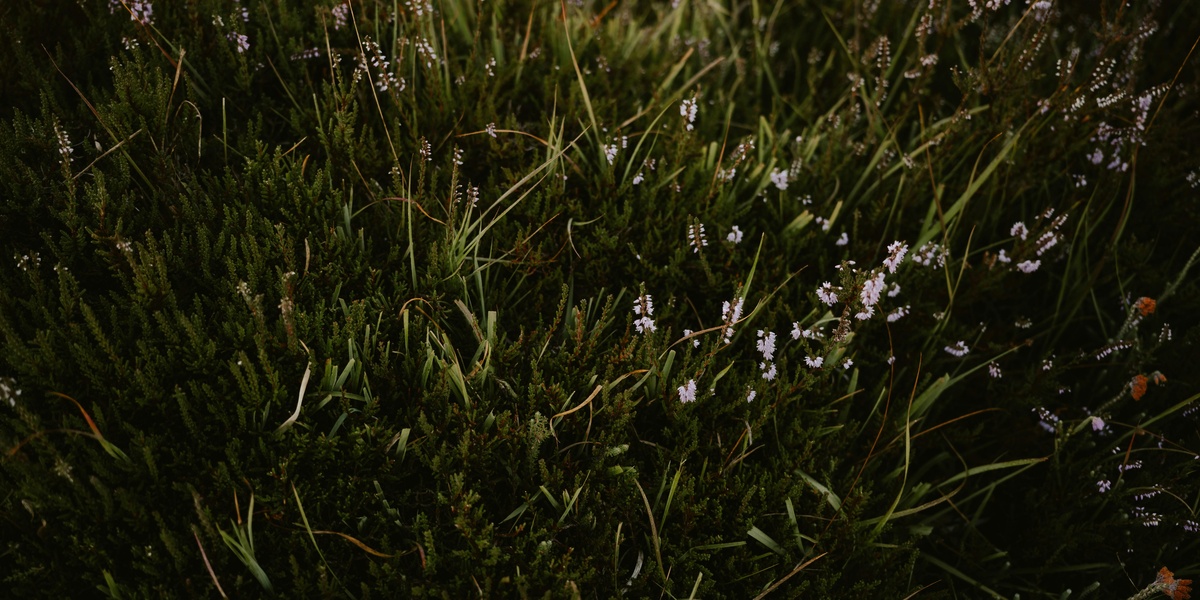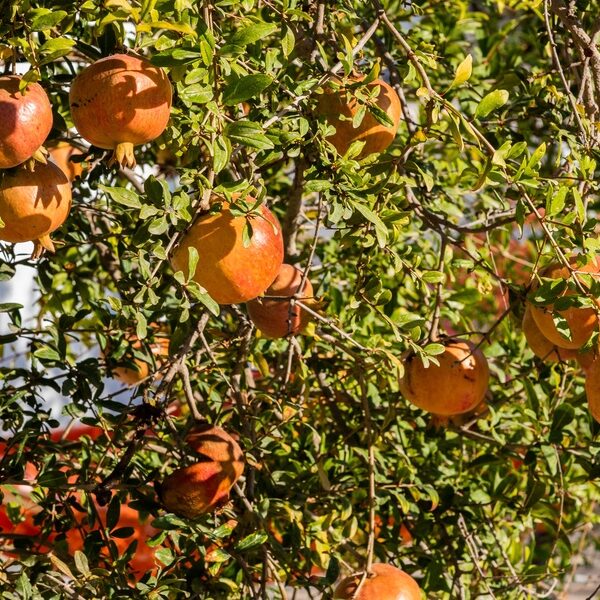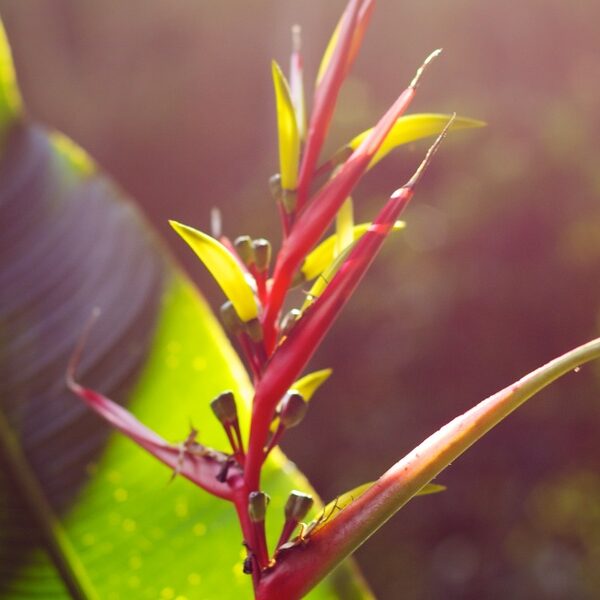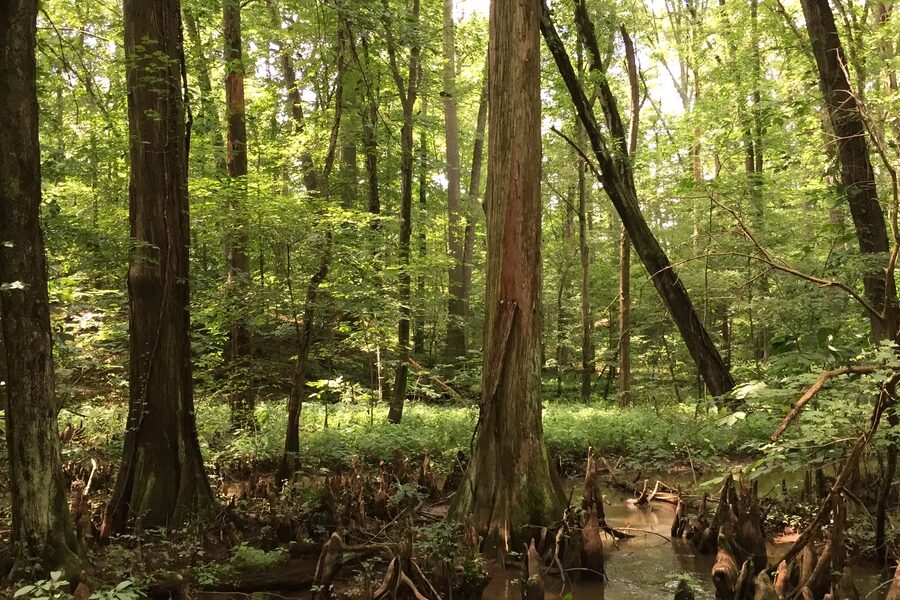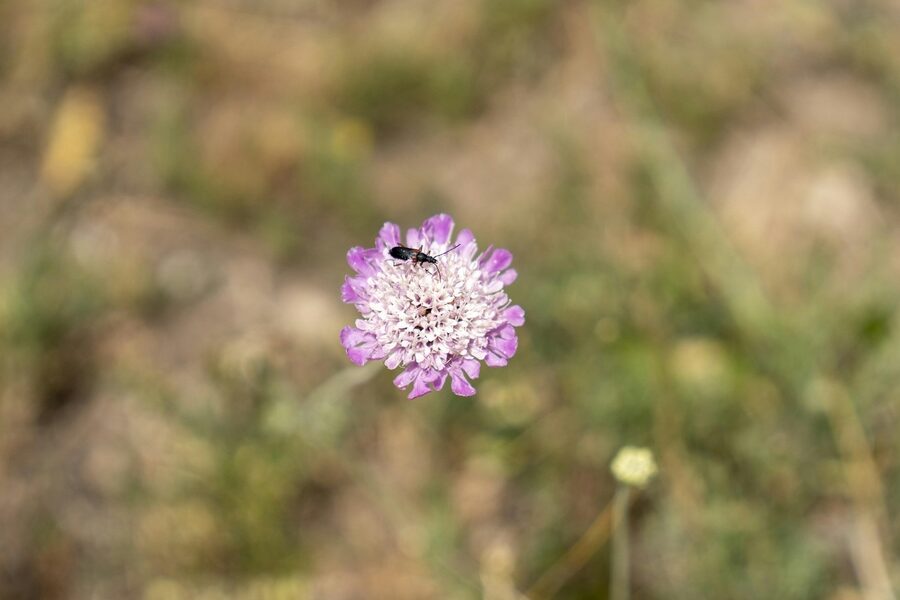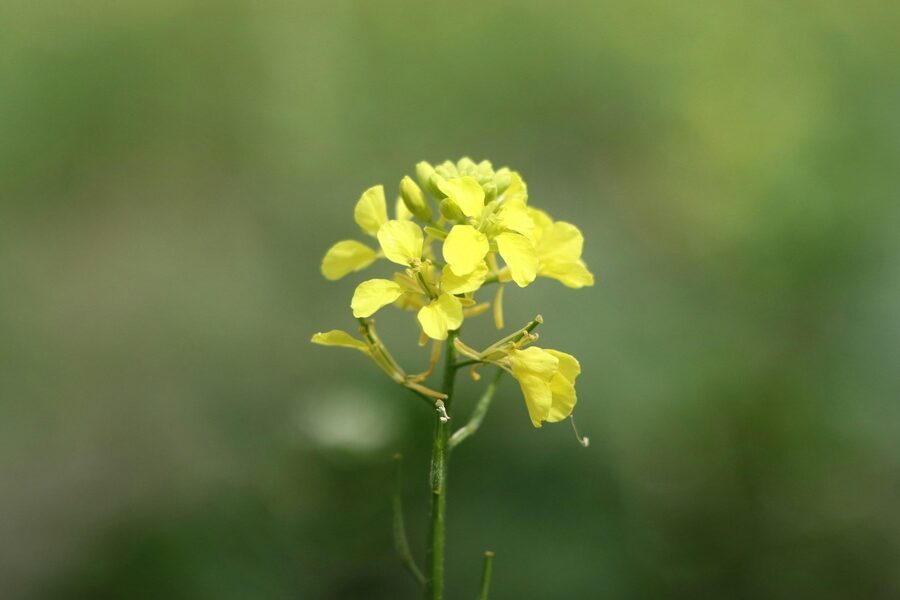Wales’ varied habitats — from coastal cliffs and salt marshes to upland moor and lowland hedgerows — support a wide mix of wild plants. Whether you’re walking a Pembrokeshire cliff path or exploring a Brecon wood, knowing which species are native helps with identification and conservation.
There are 57 Wales’ native plants, ranging from Ash to Yew. For each species this list shows the columns Scientific name,Habitat,Max height (m), which you’ll find below.
How can I quickly tell if a plant is a native species in Wales?
Start with location and habitat — many natives are habitat-specific — then check leaf shape, flower timing and seed/fruit type against a reliable field guide or the National Biodiversity Network (NBN) Atlas. Photograph distinct features (leaf, flower, bark) and compare multiple sources or use an expert-verified app before concluding.
Are any of these native plants legally protected or considered rare in Wales?
Yes; some native species have protected status or are locally scarce. Check Natural Resources Wales, Plantlife, or local conservation groups for red-list and SSSI information, and report sightings to local recording schemes to support monitoring and protection.
Wales’ Native Plants
| Name | Scientific name | Habitat | Max height (m) |
|---|---|---|---|
| English oak | Quercus robur | lowland woods, hedgerows, throughout Wales | 40 |
| Sessile oak | Quercus petraea | upland woods, western Wales, ancient woodland | 35 |
| Downy birch | Betula pubescens | uplands, peatlands, moor edges, throughout Wales | 20 |
| Silver birch | Betula pendula | woods, rides, open ground, low to upland Wales | 25 |
| Hazel | Corylus avellana | woodland, hedgerows, coppice, lowlands | 6 |
| Hawthorn | Crataegus monogyna | hedgerows, scrub, woodland edges, throughout Wales | 6 |
| Blackthorn | Prunus spinosa | hedgerows, scrub, woodland edges, lowlands | 5 |
| Field maple | Acer campestre | woodland edges, hedgerows, lowland Wales | 15 |
| Ash | Fraxinus excelsior | mixed woods, hedgerows, river valleys, throughout Wales | 35 |
| Wych elm | Ulmus glabra | woodland, upland woods, river valleys | 30 |
| Yew | Taxus baccata | ancient woods, churchyards, coastal cliffs, west Wales | 20 |
| Rowan | Sorbus aucuparia | upland woods, hedgerows, mountains, throughout Wales | 15 |
| Wild cherry | Prunus avium | woodland, hedgerows, valleys, lowlands | 20 |
| Bramble | Rubus fruticosus agg. | hedgerows, woodland edges, scrub, throughout Wales | 3 |
| Gorse | Ulex europaeus | heathland, coastal slopes, scrub, lowlands | 3 |
| Broom | Cytisus scoparius | heath, grassland, coastal slopes, lowlands | 4 |
| Heather | Calluna vulgaris | heathland, moorland, uplands, coastal heaths | 1 |
| Bell heather | Erica cinerea | heathland, coastal heath, upland slopes, west Wales | 0.6 |
| Cross-leaved heath | Erica tetralix | wet heaths, bog edges, western Wales uplands | 0.6 |
| Purple moor-grass | Molinia caerulea | wet heath, bogs, moorland, uplands | 1.5 |
| Bracken | Pteridium aquilinum | woodland, heath, hillsides, throughout Wales | 1.5 |
| Common bluebell | Hyacinthoides non-scripta | ancient woodland, hedgerows, shady ground | 0.3 |
| Primrose | Primula vulgaris | woodland edges, hedgerows, grassy banks | 0.2 |
| Wood anemone | Anemone nemorosa | ancient woodland, shady banks, western Wales | 0.2 |
| Lesser celandine | Ficaria verna | woodland, riverbanks, hedgerows, damp ground | 0.2 |
| Foxglove | Digitalis purpurea | woodland clearings, heath, disturbed ground, west Wales | 1.5 |
| Meadowsweet | Filipendula ulmaria | wet meadows, ditches, river margins, lowlands | 1.2 |
| Ragged robin | Silene flos-cuculi | damp meadows, fens, marshes, riverine Wales | 0.7 |
| Sea thrift | Armeria maritima | coastal cliffs, salt-sprayed grassland, Pembrokeshire coasts | 0.2 |
| Sea campion | Silene uniflora | rocky shores, coastal cliffs, salt-exposed outcrops | 0.3 |
| Common reed | Phragmites australis | reedbeds, estuaries, marshes, tidal creeks | 4 |
| Common sorrel | Rumex acetosa | grassland, meadows, coastal dunes, throughout Wales | 0.3 |
| Meadow buttercup | Ranunculus acris | meadows, pastures, rough grassland, throughout Wales | 0.6 |
| Cow parsley | Anthriscus sylvestris | road verges, hedgerows, fields, lowland Wales | 1.2 |
| Greater stitchwort | Stellaria holostea | hedgerows, woodland edges, scrub, throughout Wales | 0.4 |
| Yellow rattle | Rhinanthus minor | meadows, hayfields, low-fertility grassland, Wales | 0.25 |
| Valerian | Valeriana officinalis | ditch banks, wet meadows, river margins, lowlands | 1.5 |
| Bog myrtle | Myrica gale | bog pools, blanket bogs, wet heath, western Wales | 1.5 |
| Bog asphodel | Narthecium ossifragum | acid bogs, wet heaths, upland Wales | 0.4 |
| Devil’s-bit scabious | Succisa pratensis | damp meadows, moorland, marshy grassland | 0.6 |
| Ox-eye daisy | Leucanthemum vulgare | meadows, roadside verges, grassland, lowlands | 0.6 |
| Autumn hawkbit | Leontodon autumnalis | grassland, roadside verges, meadows, throughout Wales | 0.3 |
| Yellow iris | Iris pseudacorus | pond margins, marshes, ditches, estuaries | 0.9 |
| Common milkwort | Polygala vulgaris | meadows, dry grassland, calcareous sites | 0.3 |
| Dog’s mercury | Mercurialis perennis | ancient woodland floor, shady sites, throughout Wales | 0.4 |
| Ramsons (wild garlic) | Allium ursinum | damp woodlands, shady banks, river valleys | 0.3 |
| Bog cotton | Eriophorum angustifolium | blanket bogs, peatlands, upland Wales | 0.6 |
| Sphagnum bog moss | Sphagnum papillosum | blanket bogs, peat hummocks, upland Wales | 0.1 |
| Haircap moss | Polytrichum commune | heaths, bog margins, disturbed ground | 0.05 |
| Common clubmoss | Lycopodium clavatum | heathland, uplands, dry acidic soils | 0.15 |
| Soft shield-fern | Polystichum setiferum | woodland, shaded ravines, western Wales | 0.6 |
| Broad buckler-fern | Dryopteris dilatata | moist woods, shaded slopes, throughout Wales | 0.8 |
| Royal fern | Osmunda regalis | rich fens, river margins, wet woodland, lowlands | 2 |
| Ivy | Hedera helix | woodland, hedgerows, walls, coastal cliffs | 20 |
| Biting stonecrop | Sedum acre | rocky coasts, cliffs, walls, shingle shores | 0.05 |
| Common knapweed | Centaurea nigra | meadows, roadside verges, unimproved grassland | 0.7 |
| Field horsetail | Equisetum arvense | damp ground, stream banks, disturbed soils | 0.6 |
Images and Descriptions
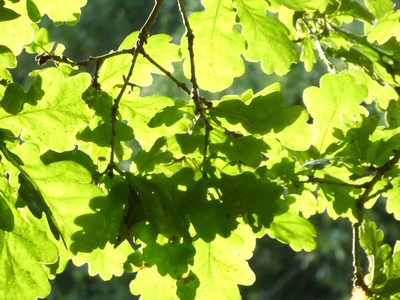
English oak
Iconic broadleaf tree of British countryside, with lobed leaves and acorns. Found in ancient woodlands and hedgerows across Wales; supports hundreds of insects and birds and features in folklore and old Welsh woodland landscapes.
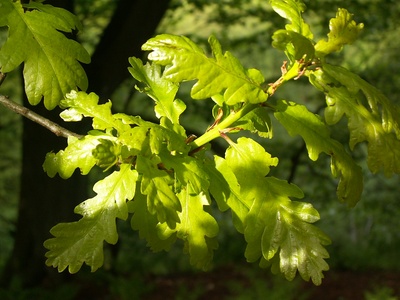
Sessile oak
A native upland oak often dominating western Welsh woodlands. Similar to English oak but with stalkless acorns; crucial for biodiversity, supporting fungi, lichens and specialist invertebrates in long-established oakwoods.
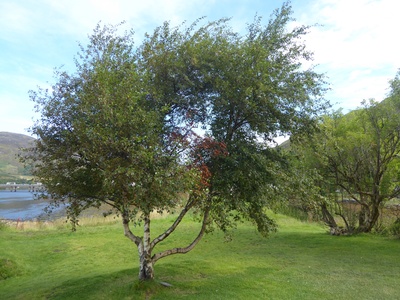
Downy birch
A hardy upland birch with soft, hairy twigs and catkins. Common on boggy soils and open moorland in Wales; pioneer species that stabilises peat and provides nectar for early insects.
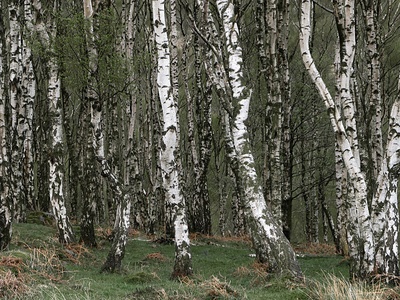
Silver birch
Graceful tree with silvery bark and pendulous branches. Colonises open ground and disturbed sites, producing catkins in spring and offering food for moth larvae and birds.
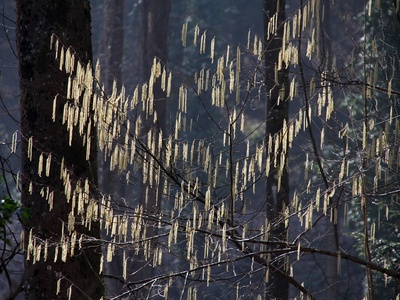
Hazel
A classic hedgerow and coppice shrub with edible nuts (hazelnuts). Important for dormice and insects; traditionally managed in Wales for charcoal, fencing and wildlife habitat.
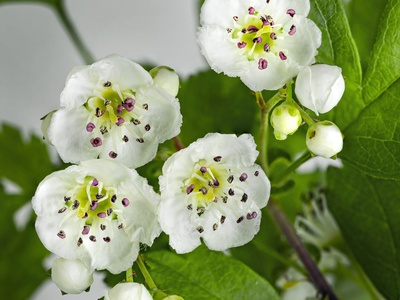
Hawthorn
Dense thorny shrub with white spring blossom and red autumn haws. Forms the backbone of Welsh hedgerows, vital for nesting birds and pollinators and steeped in folklore.
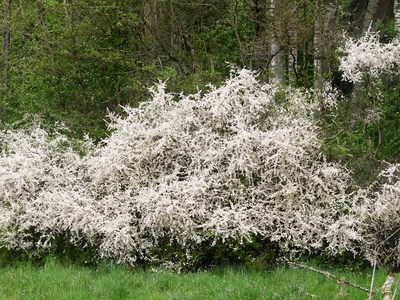
Blackthorn
Spiny shrub with early white blossoms and blue sloes in autumn. Provides shelter and nectar for insects; sloes used in traditional preserves and local liqueurs.
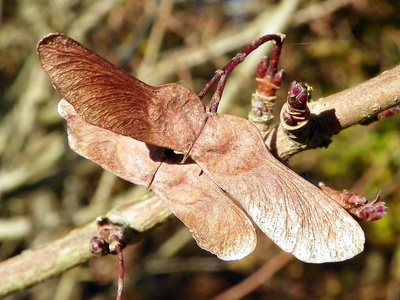
Field maple
Compact native maple of hedgerows and mixed woodlands. Sweet sap, distinctive winged seeds and dense canopy; supports insects and features in traditional rural boundaries.
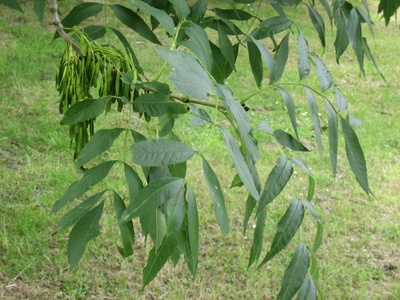
Ash
Tall, pinnate-leaved tree common in valleys and woodlands. Seeds (samaras) feed birds and mammals; ash dieback threatens populations but it remains a culturally important native species.
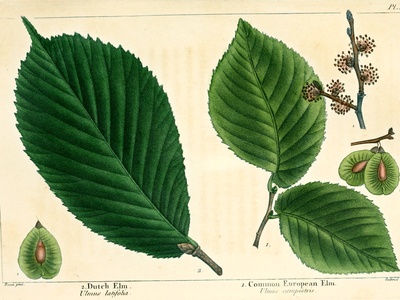
Wych elm
Robust native elm of woodlands and sheltered valleys, with large leaves and winged seeds. Historically common; affected by disease but still locally present and ecologically significant.
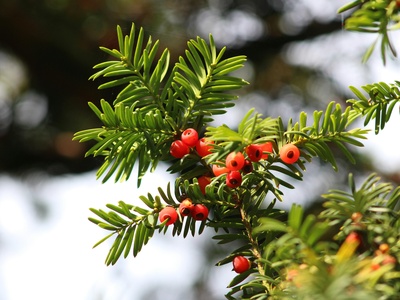
Yew
Long-lived evergreen tree with dark foliage and red arils. Often found in churchyards and ancient woodlands; culturally important and providing dense shelter for wildlife.
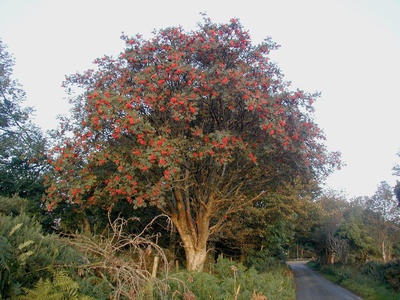
Rowan
Small tree with pinnate leaves, white blossom and bright orange-red berries. Iconic in upland landscapes, feeding birds and lending a splash of autumn color in Welsh hills.
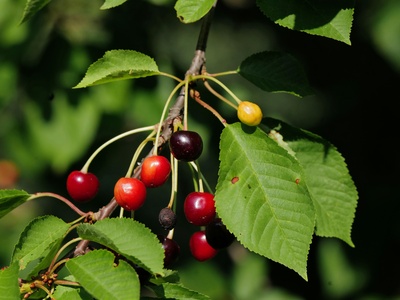
Wild cherry
Native wild cherry with spring blossom and summer cherries eaten by birds. Attractive small tree in hedgerows and woods, historically valued for timber and nectar for pollinators.
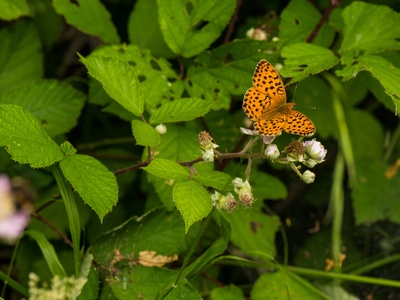
Bramble
Sprawling thorny shrub forming thickets with white or pink flowers and blackberries. Provides fruit for people and wildlife, dense nesting cover for birds and important late-season nectar.
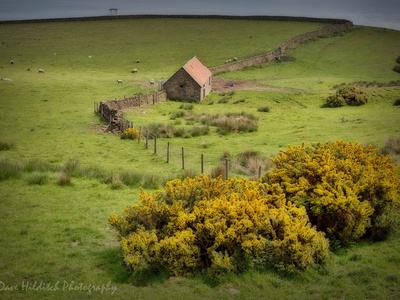
Gorse
Spiny evergreen shrub with vivid yellow pea-flowers most of the year. A defining plant of Welsh coasts and heath, offering shelter and food for insects and nesting birds.
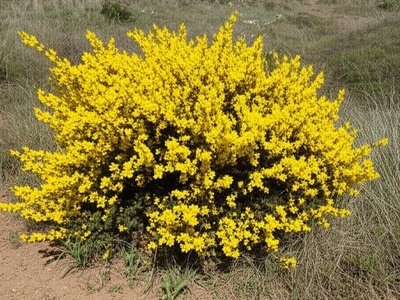
Broom
Bright yellow-flowered shrub of dry soils and open habitats. Prominent in spring and early summer, fixes nitrogen, and is culturally familiar across Welsh commons and roadside banks.
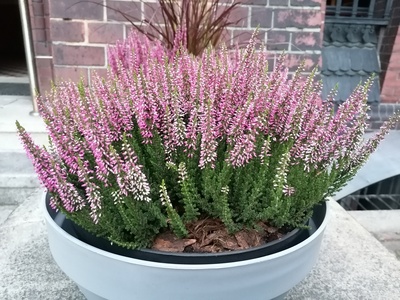
Heather
Low evergreen shrub forming purple carpets in late summer. Dominant on Welsh moors and heaths, key nectar source for heather bees and red grouse habitat, iconic upland plant.
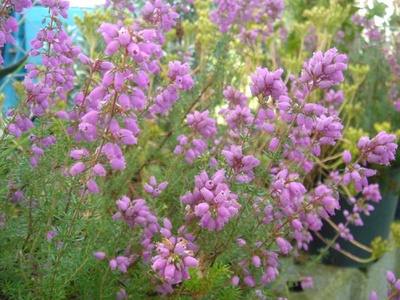
Bell heather
A small, bell-flowered heath with purple blooms late summer. Prefers dry, acidic soils and complements Calluna on heaths; attractive to bumblebees and adds coastal colour.
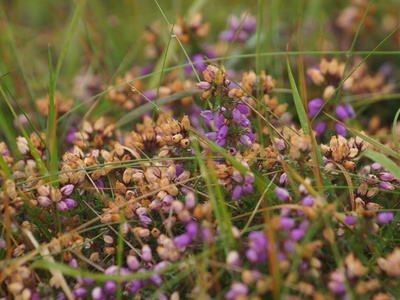
Cross-leaved heath
Pink bell-shaped flowers on wet acidic heaths and bog margins. Indicates healthy boggy habitats in Wales and supports specialist invertebrates and heather-feeding species.
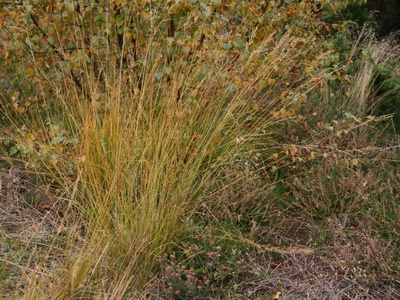
Purple moor-grass
Clump-forming grass of wet acidic soils; can dominate degraded peatlands. Tall flower panicles in late summer create distinctive purple-brown moorland vistas across Welsh uplands.
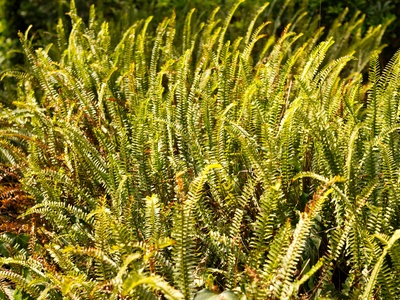
Bracken
Hardy fern forming extensive stands on slopes and open ground. Rapidly spreading fronds shape upland and woodland edges; historically used for bedding and fodder, now ecologically significant.
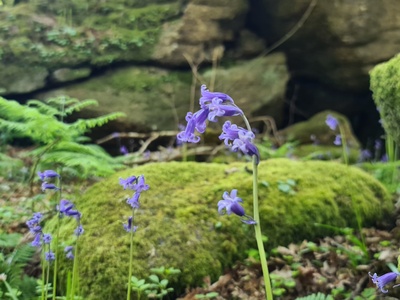
Common bluebell
Famous spring woodland flower with nodding blue bells and sweet scent. Forms carpets in ancient woods of Wales; treasured wildflower with cultural and conservation value.
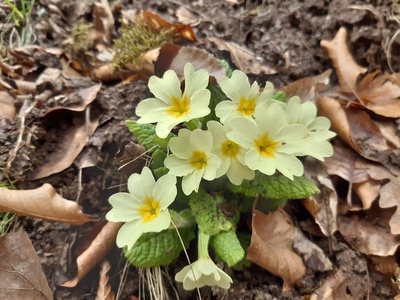
Primrose
Early spring yellow flowers often on shady banks and hedgerows. A familiar native that heralds spring in Wales, used in folklore and valuable for early pollinators.
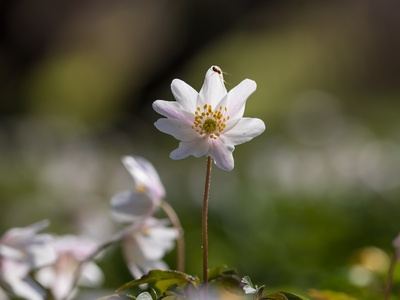
Wood anemone
Delicate white six-petalled flowers carpeting woodland floors in spring. A slow-spreading ancient woodland indicator, suggesting long continuity of woodland habitat in Wales.
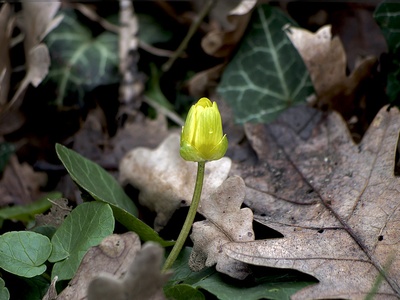
Lesser celandine
Early spring yellow buttercup-like flowers carpeting damp shady places. A harbinger of spring in Welsh woods and streamsides, feeding early pollinators and often forming bright displays.
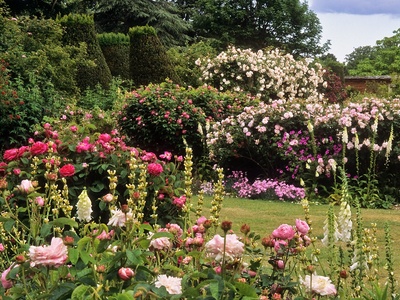
Foxglove
Tall spikes of tubular purple flowers favoured by bees. A native biennial common on acidic soils and cliff edges in Wales, important for pollinators and traditional herbal uses.
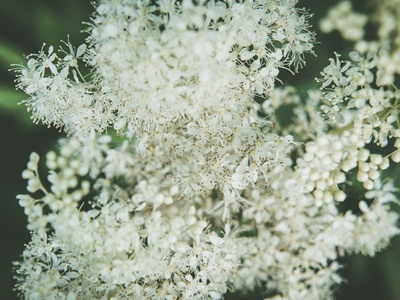
Meadowsweet
Sweetly scented creamy flower clusters in summer on damp ground. Common in Welsh river valleys and marshes; historically used medicinally and attractive to hoverflies and bees.
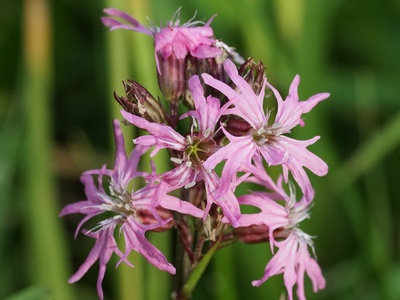
Ragged robin
Delicate pink, ragged-petalled flowers of wet meadows and fens. A colourful indicator of traditionally managed hay meadows and an important nectar source for moths and butterflies.
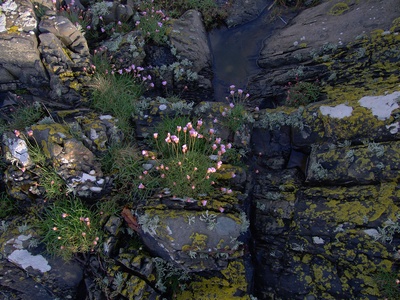
Sea thrift
Tufted coastal perennial with pink pom-pom flowers on cliffs and shingle. Salt-tolerant and hardy, common on Welsh coasts and valued in cliff-top wildflower communities.
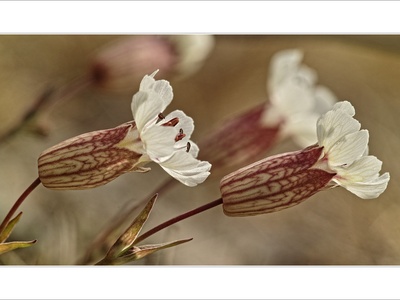
Sea campion
White-berried, sticky-flowered perennial found on exposed coastal rocks in Wales. Tolerant of salt spray and wind, it brightens cliff crevices and supports coastal pollinators.
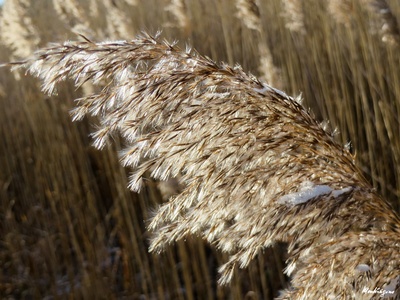
Common reed
Tall perennial grass forming reedbeds along Welsh coasts and inland wetlands. Provides essential habitat for birds and insects, and is a key species in wetland ecology and floodplain management.
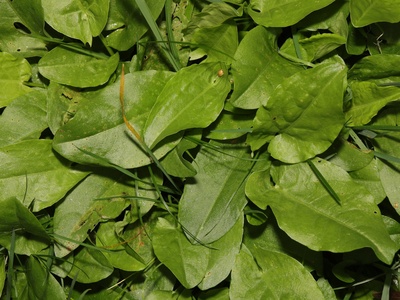
Common sorrel
Tangy, arrow-shaped leaves in open grasslands; a familiar wild salad green. Widespread in Welsh meadows and dunes, supporting specialist herbivores and offering early-season forage.
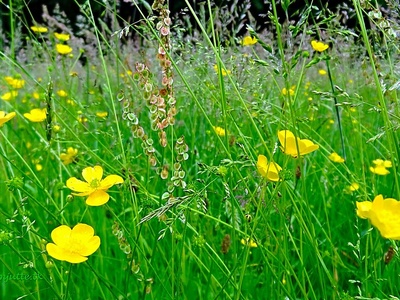
Meadow buttercup
Upright buttercup with bright yellow flowers in hay meadows and pastures. Common across Wales, indicative of unimproved grassland and attractive to pollinators and grazing wildlife.
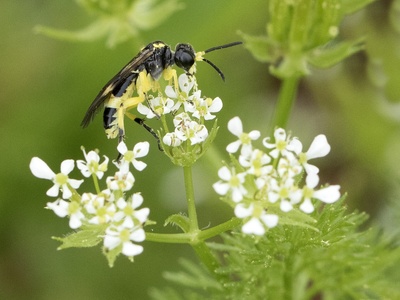
Cow parsley
Tall umbel-flowered plant appearing in spring along roads and hedges. A familiar countryside plant that provides early-season nectar and forms part of traditional rural verges.
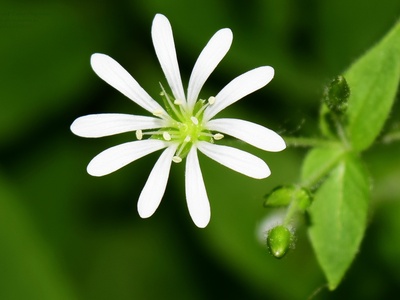
Greater stitchwort
White star-like flowers in spring carpeting hedgerows and woodland margins. A delicate native wildflower that brightens shady edges and feeds small pollinators.
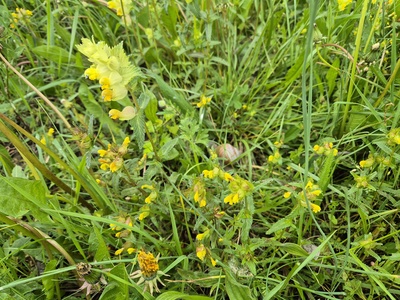
Yellow rattle
Semi-parasitic wildflower that reduces grass vigour to help wildflower diversity. Yellow, toothed flowers in summer; used in meadow restoration and naturally found in traditionally managed Welsh hay meadows.
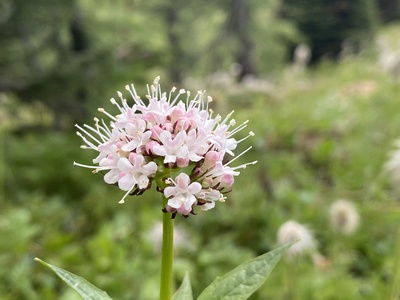
Valerian
Fragrant clusters of pale pink-white flowers on marshy ground. Native to damp areas in Wales, historically used medicinally and attractive to a range of insects.
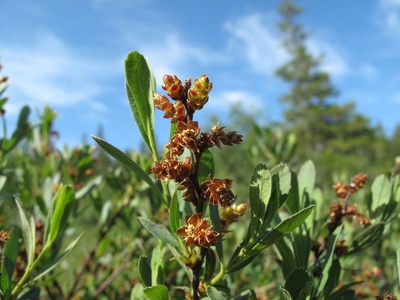
Bog myrtle
A fragrant, nitrogen-fixing shrub of acidic bogs and wet heaths. With aromatic leaves and catkin-like flowers, it helps structure peatland vegetation and supports specialist insects.
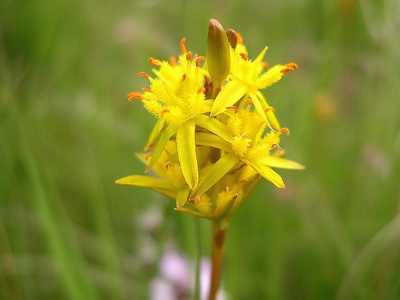
Bog asphodel
Striking yellow star-like flowers on peatlands in summer. Characteristic of acidic bogs and wet heaths, signaling good quality peat habitat and adding summer colour to upland mires.
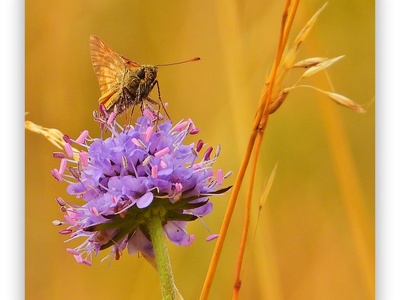
Devil’s-bit scabious
Rounded blue-purple flowerheads in late summer that feed many insects, notably marsh fritillary butterflies. A keystone meadow species across Welsh pastures and upland grasslands.
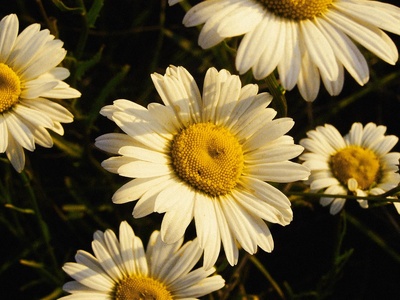
Ox-eye daisy
Classic daisy-like flowers in summer on unimproved meadows. Provides nectar to insects and is a familiar component of traditional hayfields and roadside wildflower displays in Wales.
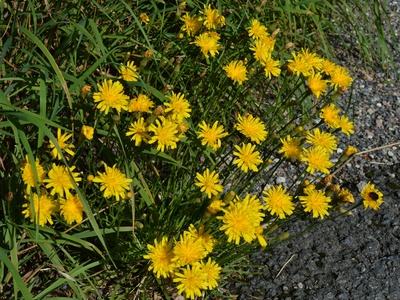
Autumn hawkbit
Dandelion-like yellow flowers in late summer and autumn. A native meadow species that adds late-season forage for pollinators and is common in rough grassland.
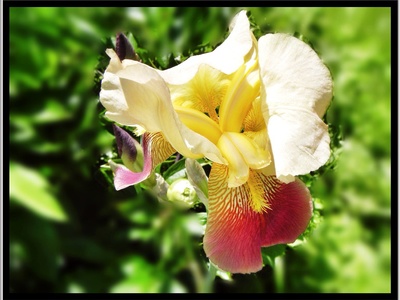
Yellow iris
Bold yellow-flag iris of wetlands and stream margins. Tall, showy flowers in summer and a common feature in Welsh ponds and reedbed edges providing shelter for wildlife.
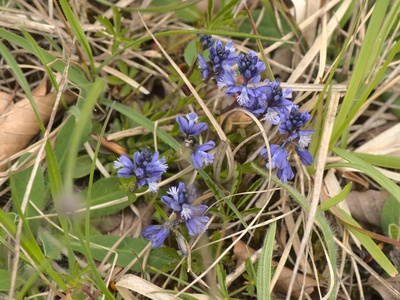
Common milkwort
Small purple pea-like flowers in summer on well-drained grasslands. A modest native wildflower contributing to meadow diversity and supporting specialist pollinators in Wales.
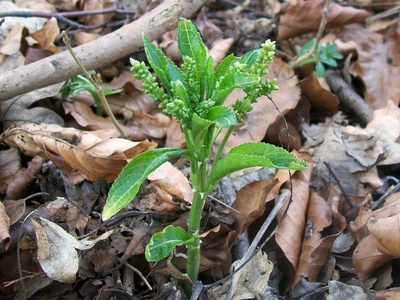
Dog’s mercury
Shade-loving groundcover of ancient woods, with inconspicuous flowers early in season. Indicator of long-established woodland, forming dense patches and supporting woodland nutrient cycles.
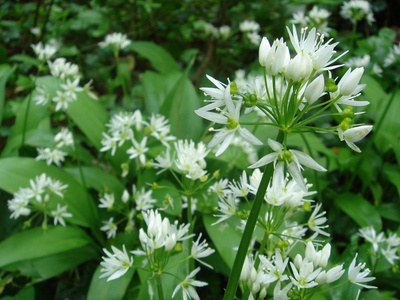
Ramsons (wild garlic)
Lush green leaves and white umbels in spring with strong garlicky aroma. Forms striking carpets in Welsh woodlands, prized by foragers and beneficial for early pollinators.
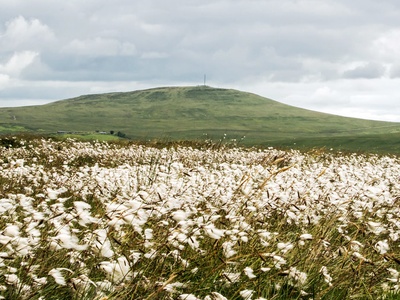
Bog cotton
Notable for fluffy white seed heads carpeting peat bogs in summer. A classic bog species helping peat formation and a striking visual of Welsh upland mires.
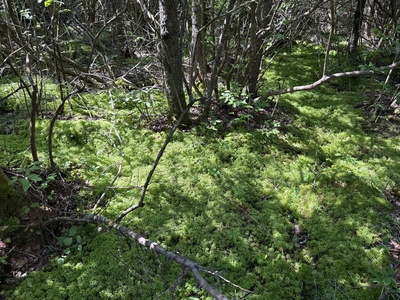
Sphagnum bog moss
A key peat-forming moss creating spongy hummocks and retaining water in bogs. Essential to Welsh peatland ecology and carbon storage, supporting unique bog flora and fauna.
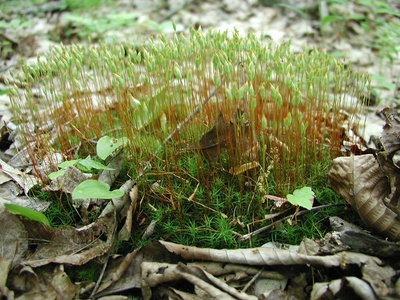
Haircap moss
Dense upright moss forming velvety green cushions in acidic soils and open ground. Common in Welsh heaths and moor edges, contributing to ground cover and microhabitats.
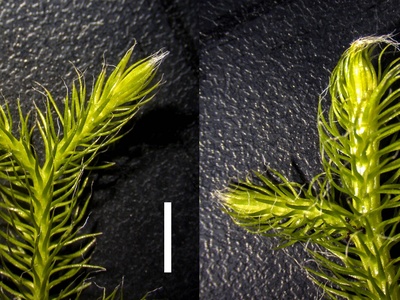
Common clubmoss
Low, creeping spore-bearing plant of heaths and moorlands. Ancient lineage with candle-like upright shoots; a subtle component of Welsh upland vegetation.
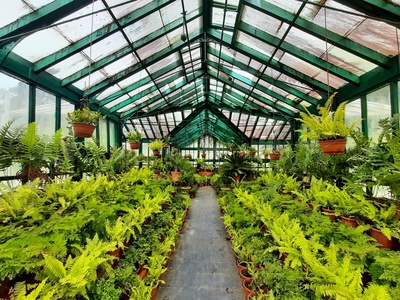
Soft shield-fern
Glossy feathery fronds making lush woodland understorey. Common in damp, shaded Welsh woodlands and ravines, providing year-round structure and habitat for small animals.
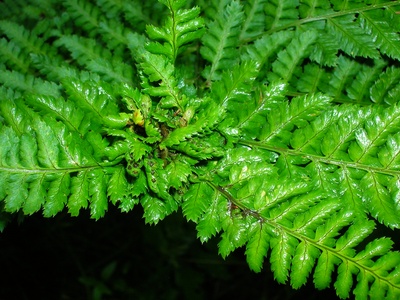
Broad buckler-fern
Robust fern of damp woodlands and hedgebanks with arching fronds. Widespread across Wales, contributing to shady understory diversity and soil stability.
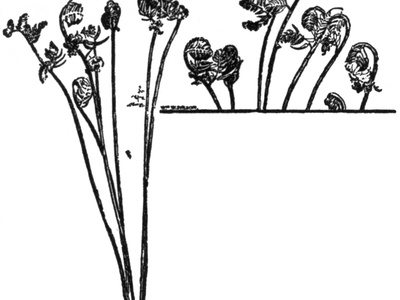
Royal fern
Impressive large fern of fens and damp woodlands with feathery fronds. An indicator of wet, base-rich habitats and a striking feature in sheltered river valleys and wetlands.
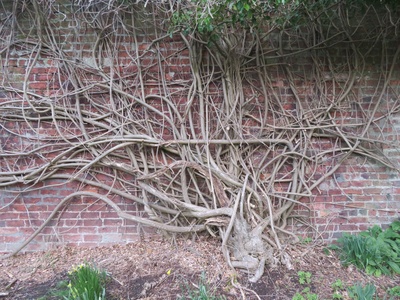
Ivy
Evergreen climber and groundcover that flowers in autumn and fruits for late-winter birds. Native in Wales, it provides year-round nectar, shelter and nesting opportunities in woodlands and towns.
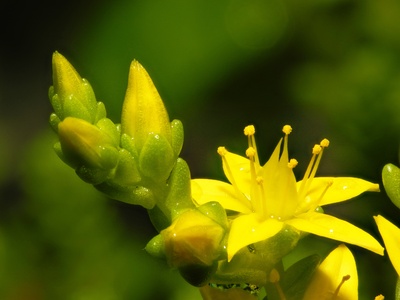
Biting stonecrop
Tiny succulent forming mats on exposed coastal rocks and walls. Tolerant of salt and drought, it brightens crevices with yellow flowers and supports coastal invertebrates.
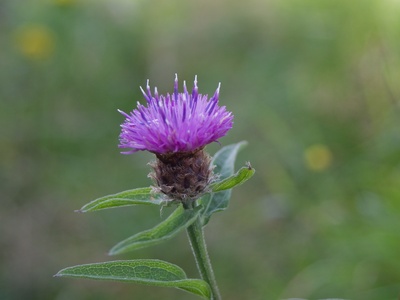
Common knapweed
Purple thistle-like flowerheads of species-rich meadows. A magnet for bumblebees and butterflies, characteristic of traditionally managed Welsh hayfields and wildflower-rich grasslands.
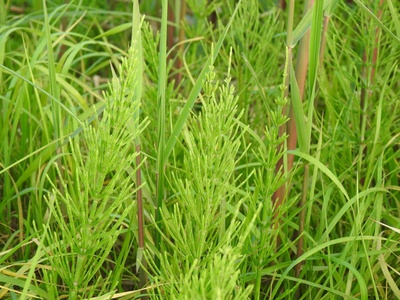
Field horsetail
Ancient jointed-stem plant with brush-like fertile shoots in spring. Common in wet or disturbed ground across Wales and notable for its primitive, reed-like appearance.
